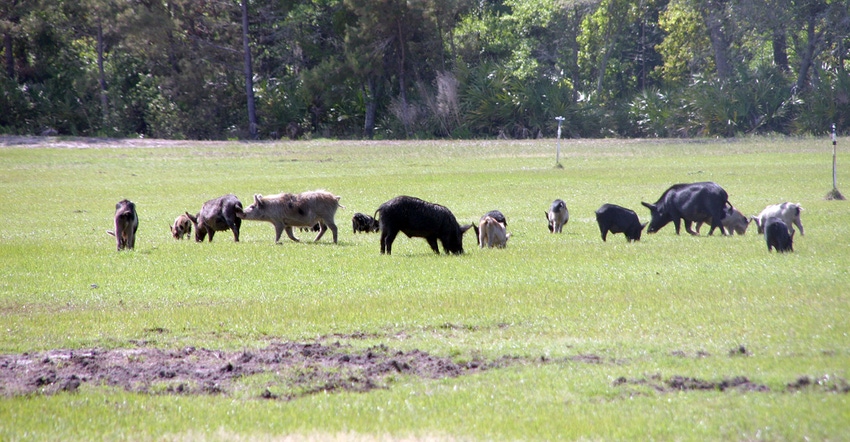
Planting time is crunch time for farmers. Between slow-moving weather systems dumping multiple inches of rain at just the wrong time, and then having to wait for fields to dry before planters can roll, the last thing any farmer needs is another problem — like feral hogs.
Enter Kris Godwin, Mississippi state director, USDA Wildlife Services. Godwin works with state Extension personnel, landowners, land managers, and just about anyone else who has a vested interest in natural resources or ground used for production agriculture. “Late February to early March is always a critical time for our region’s farmers,” says Godwin. “Around this time of the year, they’re usually dealing with short planting windows as they work to get corn or soybeans in the ground.”
On March 9, Godwin and her staff, in conjunction with Panther Swamp, Theodore Roosevelt, and Dahomey, National Wildlife Refuge staff, the Yazoo County Airport, Cleveland Airport, and area law enforcement, successfully completed a feral swine removal operation across the north and south Delta regions. Over a two-week period, over 1,100 feral swine were harvested on private, state, and federal lands.
The aerial removal program is just one tool in their deep toolbox of operations geared to reduce wild hog populations. “We’ve conducted this aspect of our program the last several years, usually around that same time,” says Godwin. “We conduct this specific operation then to avoid deer and turkey season.”
By using a helicopter, substantial numbers of swine can be taken in a short time, which reduces the level of hog activity in specific areas where farmers are conducting planting operations.
Other Tools and Considerations
The rest of the year Godwin oversees trapping operations, works with farmers to show them how to trap feral swine on their own land, and conducts workshops to reach more people who have an economic investment in the region’s land. “We are able to harvest swine from the air only for a short period of time,” adds Godwin. “Once the Delta greens up, it’s impossible to see through the thick vegetation.”
Trapping is the primary method of reducing feral hog populations. When Godwin has the personnel, she ramps up the trapping efforts. “I have one full-time wildlife biologist working around Panther Swamp National Wildlife Refuge because pigs tend to stay in that type of environment,” explains Godwin. “The problem is, they eventually branch out to areas where farming operations are being conducted, and that has an impact on not only the farmers but also to the people who make their living from farming operations, as well as stops further down the commodity supply chain.”
Research conducted by the Mississippi State University Extension Service revealed feral swine cause between $60 million to $70 million in agricultural commodity and property damage each year in Mississippi. “Feral swine don’t discriminate. They will target and destroy corn, soybean, rice, or hay fields,” explains Dr. Bronson Strickland, Extension professor, Wildlife Management, Mississippi State University. “Damage may be two-fold; damage to fields, and damage to tractors or other farm equipment when they encounter depressions caused by rooting swine.”
Feral swine that have been fitted with GPS tracking collars reveal their large home ranges throughout the year. Most swine will stay within a few thousand acres, but some boar will roam over 10,000 acres.
The National Wildlife Refuge staff understands the negative impact from feral hogs, and has been providing office space, manpower, and supplies to Godwin and her staff. “It takes more than one organization or one department to move our effort forward,” adds Godwin. “Also, I have a biologist who is our Feral Swine Coordinator currently working with the Levee Board to reduce the amount of damage pigs cause to our levee system.”
In addition, the USDA program coordinates a night removal program on a limited basis. “We can’t conduct the night program every single night and maintain the efficiency of our other programs because of our limited personnel,” says Godwin.
If Godwin gets calls from farmers who complain about high populations of hogs on their fields under agricultural production, they will use the night removal program to supplement the trapping and daylight aerial removal program.
About the Author(s)
You May Also Like




